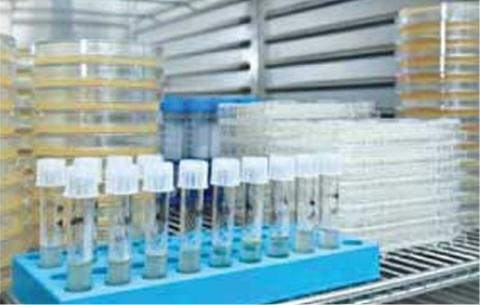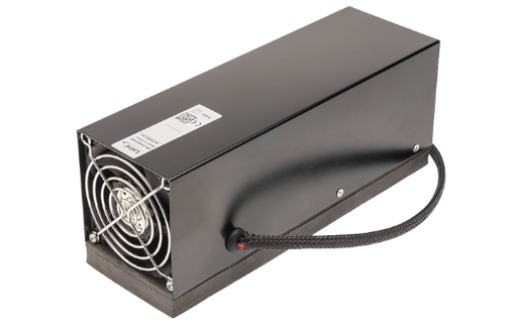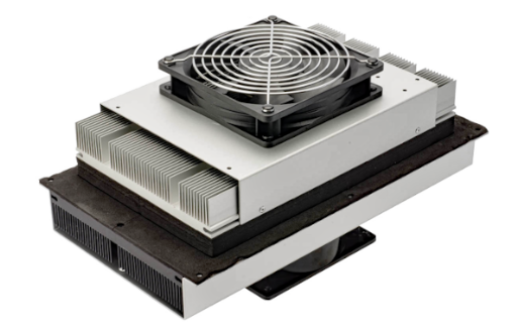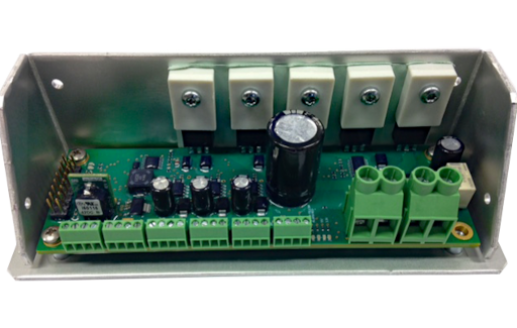Medical Storage Applications
Thermal management inside the chamber is vital, as temperature fluctuations can influence the interaction between sample components and adsorbents. Space-saving thermoelectric cooler assemblies can be used for precise temperature control.

Quick Links
Medical storage chambers are generally small units that are stacked on top of one another to save bench space. Stacking the storage chambers presents some challenges because the air cannot flow up through the chambers, it can only move through the units from front to back. This leaves limited flow paths for air circulation. The use of thermoelectric cooler assemblies for medical storage chamber cooling offer an efficient, thermally stable, reliable, low maintenance, and low cost-of-ownership solution. Thermoelectric cooler assemblies provide both cooling and heating to maintain the temperature in medical storage chambers. They offer compact form factors to accommodate the tight geometric space constraints.
Storage Chambers for Liquid Chromatography Equipment
Liquid chromatography equipment and other such analytical devices are used in a variety of industries for sample analysis. Samples to be tested are typically stored in a refrigerator, and are moved to a temperature-controlled storage chamber nearer the test equipment while awaiting analysis. Liquid chromatography units have a high throughput and typically utilize add-on sample storage chambers to control the specific temperature of the samples prior to testing. Thermoelectric cooler assemblies are an advantageous cooling technology in these sample storage for liquid chromatography equipment. Utilizing the Tunnel Series or PowerCool Series of thermoelectric cooler assemblies, combined with an SR-54 temperature controllers or PR-59 temperature controller, Laird Thermal Systems is able to quickly offer a complete thermal management solution that delivers customer products to market faster.
Read more: Bi-directional Microcontrollers Monitor and Protect Medical Equipment Application note
CO2 Incubation Thermal Management
The purpose of a CO2 incubator is to create the most natural atmosphere, making it favorable for cell and tissue cultures to develop. Since this requires high humidity and constant temperature, temperature stability is vital. Thermoelectric cooler assemblies offer a high coefficient of performance (COP) to minimize power consumption when cooling or heating CO2 incubators. The AA-230 Series and AA-250 Series thermoelectric cooler assemblies offer smaller, more efficient options for precise thermal management in compact CO2 incubators.
Typical temperature settings range from 4°C to 80°C, with relative humidity between 95 and 98 percent and CO2 concentrations ranging from 0.3 to 19.9 percent. Historically, temperature in CO2 incubators were controlled either by a water bath that circulated through the walls of the cabinet (water jacketed), compressor-based systems, or by electric coils that gave off radiant heat. Modern units now use solid-state thermoelectric-based cooling for temperature control.
Thermoelectric cooler assemblies can be customized based on a standard platform to meet application requirements. These thermoelectric cooler assemblies offer 230 Watts and 250 Watts of cooling power at Delta T=0°C respectively. Using impingement flow to transfer heat, the AA-230 and AA-250 Series offer dependable, compact performance by cooling objects via convection. The solid-state construction requires less maintenance than standard compressor-based cooling systems.
Laird Thermal Systems’ thermoelectric cooler assemblies, driven by the SR-54 programmable microcontroller, deliver temperature stability to within ± 0.15°C of the temperature set point in cooling and heating mode. With built-in monitoring and closed loop feedback control intelligence, the SR-54 temperature controller provides monitoring and alarm functionality, including identification of a problematic fan, thermoelectric cooler, over-temperature thermostat and temperature sensor failure — all of which are critical to maximizing CO2 incubator uptime.




